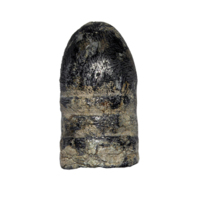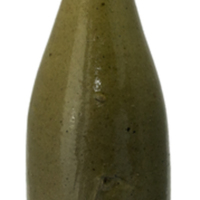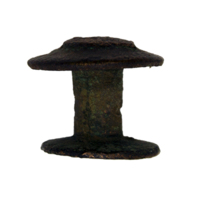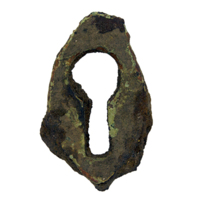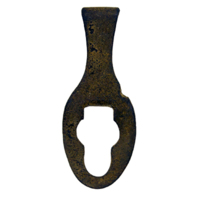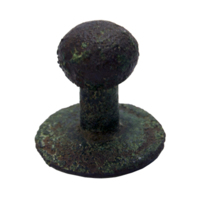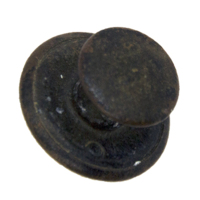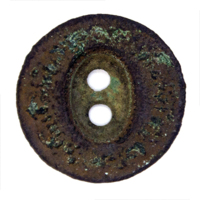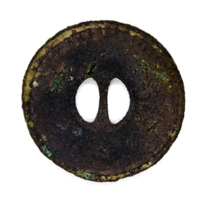Cairns (1876)
In early October 1876, there were several hundred people camped at Trinity Bay in two separate groups; one with Sub-Inspector Douglas on Trouton Esplanade and the other with Old Bill Smith at Smith’s Creek. Both parties thought the Queensland colonial government would establish a new settlement at Trinity Bay, and they were waiting for the government surveyor to arrive.
The first foreigners at Pana Wangal
There had been a number of groups of Europeans and Anglo-Australians in the area prior to the establishment of Cairns in 1876. James Cook and the crew of the H.M.S. Endeavour were the first Europeans at Pana Wangal / Trinity Bay, arriving on Trinity Sunday 1770. Fifty years later Phillip Parker King arrived in the H.M.S. Bathurst, followed by Wickham and Stokes in the Beagle, Blackwood in the Fly and Stanley in the Rattlesnake in 1848.
Bêche-de-mer fishermen arrived in the area in the late-1860s and set up semi-permanent camps on offshore islands. In the early 1870s timber-cutters arrived looking for red cedar. After the establishment of Cooktown in 1873, coastal traffic in the area increased. The first detailed reconnaissance of the bay was by Captain Moresby in H.M.S. Basilisk in 1873, followed by George Dalrymple’s Queensland North-East Coast Expedition later that year.
The Hodgkinson goldrush
The Hodgkinson Goldfield and Minerals Area was declared on 19 June 1876, and little over two weeks later, Bill Smith and John Doyle arrived in Thornborough and announced they had found a track from the goldfield to the top of the range above Trinity Bay.1 On 8 July, Goldfields Warden Howard St. George convened an outdoor meeting outside Mulligan & Co.’s store in Thornborough.2 Around 500 miners heard Doyle and Smith give an account of their expedition, and how they came to within eight miles of a good landing place on the coast at Trinity Bay.3 Rumours quickly spread that the Queensland colonial government would establish an new settlement and port there.4
Investigating Trinity Bay
Cardwell Police Magistrate Brinsley Guise Sheridan was instructed to sail to Trinity Bay, search for a site for a town, and report on the suitability of the harbour.5 Sheridan, Cardwell harbour pilot Edward W. Brittain, and the four men of the pilot boat crew arrived in Trinity Bay on 15 July 1876 and examined the area around Gimuy in the land of the Gimuy Walubara Yidinji people. They camped at the southern end of the esplanade next to a white sandy beach, at a spot Sheridan thought would be ideal for the new township of 'Thornton’.6 There was no sign of any other Anglo-Australians at Trinity Bay, so they returned to Cardwell.
The following month, a group of Townsville business men that included William Aplin, chartered the S.S. Porpoise and explored Trinity Inlet and part of the Mulgrave valley.7
When Douglas’s party left Thornborough in mid-September 1876 to search for a track to Trinity Bay, Brittain was instructed to sail to Trinity Bay again, to offer assistance. The cutter towed a police whaleboat crewed by Sub-Inspector Robert Arthur Johnstone, Sub-Inspector George Townsend, Corporal Mowbray and nine Aboriginal police troopers. They arrived at Trinity Inlet on 18 September 1876 and met Douglas five days later.[8] This group cut a track up the range and explored the Barron River while waiting for Goldfields Warden Howard St. George to arrive from Thornborough.
At the end of September, a group of around 160 miners, led by Bill Smith, came down the range via Smith’s Track and camped at Smith’s Creek. Two days later, another group of miners, led by St. George arrived and camped on the beach at Trouton Esplanade.

William True Bennett, First landing at Cairns, 1876.
Image number: 24477, picqld-2002-11-20-13-28,
John Oxley Library, State Library of Queensland.
Establishing the port of Cairns
On 4 October 1876, the S.S. Leichhardt anchored in Trinity Bay on her way north to Cooktown, and offloaded 70 men and their horses. Two days later the Australasian Steam Navigation Co.’s S.S. Porpoise arrived in Trinity Bay from Townsville with 143 passengers, horses and a full cargo of supplies. Among the passengers were two government officials: David Spence had been appointed Acting-Sub-Collector of Customs, and Land Commissioner Sharkey was tasked with laying out the new settlement. The new harbour pilot and pilot boat crew of four were also aboard.9
Spence noted there were around 400 people at Trinity Bay, in two separate camps a couple of miles apart. Smith’s camp was the best site for a landing place, as the creek was deep and large steamers could tie up at the creek bank, but the area was surrounded by mangrove swamps with only a small ridge of land for a township, and there was no fresh water available.10 The other site was near the sandy beach at the southern end of Trouton Esplanade. This was the site Sheridan had selected during his visit three months earlier. Although it did not offer the same mooring facilities, it was a more open and healthier location away from the swamps and mosquitoes, there was fresh water available in nearby Yirrganydji wells, and jetties could be constructed out over the mud-flats to allow ships to moor at high tide.
It was suggested that two settlements be established – the township of Thornton on the esplanade and the port of Cairns on Smith’s Creek.11 After inspecting both sites and travelling along Douglas’ Track to the top of the range, Sharkey decided to lay out the new township at Sheridan’s esplanade site. Most of the 160 or so miners who had pegged out sites at Smith’s Landing abandoned their camps and returned to the Hodgkinson, leaving around 20 men behind in the mangrove swamp.12 On 7 October the new settlement was named in honour of the Governor of Queensland, William Wellington Cairns. While Sharkey cut survey lines through the rainforest scrub and pegged out the blocks for the new town, starting with the site for the Customs House, post office, court house and police paddock, the 400 male residents, six female residents and an increasing number of Chinese miners, erected tents and rough shanties made of timber poles and corrugated iron. Sly grog shops sprung up “at every step”.13 This ‘canvas town’ was centered around what is now the southern end of Abbott Street, near the Pullman Cairns International Hotel and the Barrier Reef Hotel.
On 27 October the Government Gazette announced the commencement of Court of Petty Sessions at Cairns, and on 1 November, the township was inaugurated at a luncheon given by Captain Thomas Lake on board the Government ship, S.S. Victoria.
Hand coloured lithograph titled:'Plan of Cairns Harbour Trinity Bay Surveyed by Navg. Liet. E.R.Connor. R.N.'Also titled:'Australia - East Coast,…Plan of Cairns Harbour
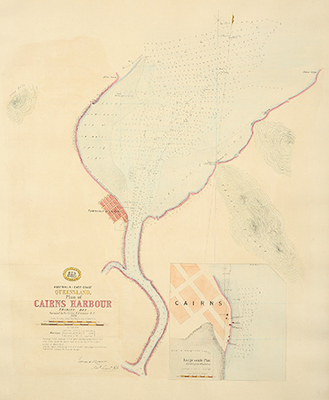
| Go to the next section ⇒ The packers set up camp at Kamerunga on the Barron. | |
 |
This webpage is an excerpt from the upcoming book Old Smithfield: Barron River township (1876-1879) by Dr Dave Phoenix. Find Out More Here |
Featured Artefacts from Old Smithfield:
-
1. Brisbane Courier, 25 July 1876: 2. ↩
-
2. ‘Mining Notes’ Queenslander, 29 July 1876: 27. ↩
-
3. ‘The Sketcher’ Queenslander, 26 August 1876: 25. ↩
-
4. Daily Northern Argus (Rockhampton), 7 July 1876: 2. ↩
-
5. Police Magistrate Brinsley Guise Sheridan (1816, Devon–1878, Cooktown) was Sub-Collector of Customs at Port Hinchinbrook (Cardwell). ↩
-
6. Port Denison Times, 26 August 1876; D2301, Cairns Historical Society. ↩
-
7. Daily Northern Argus, 16 August 1876: 2. ↩
-
8. William Aplin (1840, Somerset–1901, Warwick, Queensland). ↩
-
9. Robert Arthur Johnstone, Official report of a journey made by Sub-Inspector Johnstone from the coast of Trinity Bay to Thornborough in search of a road to the Hodgkinson goldfields, submitted to Police Commissioner David Seymour, published in Queenslander, 21 October 1876: 15. ↩
-
10. Boomerang, Queenslander, 28 October 1876: 26. ↩
-
11. The Week (Brisbane), 4 November 1876: 20-21. ↩
-
12. ‘Telegraphic Despatches’ Rockhampton Bulletin, 10 October 1876: 2. ↩
-
13. ‘Trinity Bay’, Mackay Mercury and South Kennedy Advertiser, 28 October 1876: 2. ↩


